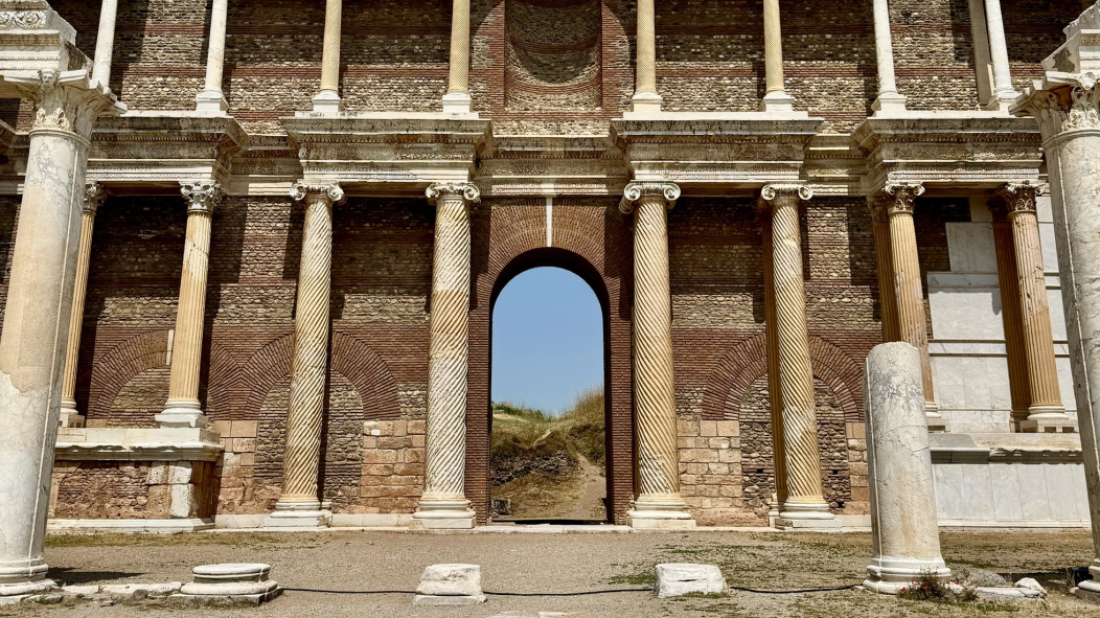South Korea's ex-President Yoon faces potential death sentence request in trial
A South Korean court hearing the case of former President Yoon Suk Yeol on charges of insurrection postponed the sentencing request until next week af...

The ancient city of Sardis and the Lydian Tumuli of Bin Tepe in western Türkiye have been inscribed on the UNESCO World Heritage List, Türkiye’s Minister of Culture and Tourism announced on Saturday.
Located in the Manisa province, the two sites reflect the rich legacy of the Lydian civilisation, which flourished in the region in the first millennium BCE. Sardis was the Lydian capital and is widely recognised as the place where coinage was invented.
The Turkish Foreign Ministry welcomed the recognition, noting that the addition was formalised on 12 July during the 47th Session of the UNESCO World Heritage Committee held in Paris.
“With this inscription, the number of sites from Türkiye on the UNESCO World Heritage List has reached 22,” the ministry said in a statement.
The Bin Tepe area, located east of Sardis, is home to hundreds of burial mounds, including royal tombs of Lydian kings. Often referred to as the “Lydian Pyramids,” the tumuli stretch across the Gediz River plain and have long been considered one of the most significant archaeological landscapes in western Türkiye.
The newly inscribed heritage site includes not only monumental ruins of Sardis such as the Gymnasium, Synagogue, and Temple of Artemis, but also the surrounding tumulus fields of Bin Tepe, which collectively illustrate the political, cultural and economic power of the ancient Lydians.
UNESCO’s recognition comes amid a broader campaign by Turkish authorities to spotlight the country’s cultural assets during the “Century of Türkiye” initiative, which marks the centenary of the republic.
Snow and ice stalled travellers in northwest Europe on Wednesday, forcing around a thousand to spend the night in Amsterdam's Schiphol airport but delighting others who set out to explore a snow-blanketed Paris on sledges and skis.
U.S. President Donald Trump has warned that Iran could face a strong response from the United States if its authorities kill protesters amid ongoing unrest.
Iran is now facing a near‑total internet blackout as anti-government protests sweep the country. Major cities including Tehran have seen connectivity drop sharply, leaving millions of residents isolated from online communication.
New York City parents could soon have access to free childcare for two-year-old children following a joint announcement made by Mayor Zohran Mamdani and Governor Kathy Hochul on Thursday (8 January).
Tens of thousands of Iranians have taken to the streets in Tehran and across at least 28 cities in a wave of anti-government demonstrations, now entering their twelfth day.
Beyoncé has officially joined the billionaire club, becoming the fifth musician to reach a 10-figure fortune, Forbes reports.
Brigitte Bardot, the French actress whose barefoot mambo in And God Created Woman propelled her to international fame and reshaped female sexuality on screen, has died at the age of 91, her foundation said on Sunday.
Director James Cameron has shared the key reasons behind the global success of Avatar: Fire and Ash, the third installment in one of the highest-grossing film franchises of all time. In an interview with China Media Group in Hainan Province, Cameron spoke about the universal appeal of the film.
Tesla CEO Elon Musk has become the world’s richest individual, with a net worth of US$749 billion, after the Delaware Supreme Court reinstated $139 billion in stock options that were voided last year, according to Forbes’ billionaires index.
A rare pair of bright-green Nike “Grinch” sneakers worn and signed by the late NBA legend Kobe Bryant have gone on public display in Beverly Hills, ahead of an auction that could set a new record for sports memorabilia.
You can download the AnewZ application from Play Store and the App Store.

What is your opinion on this topic?
Leave the first comment